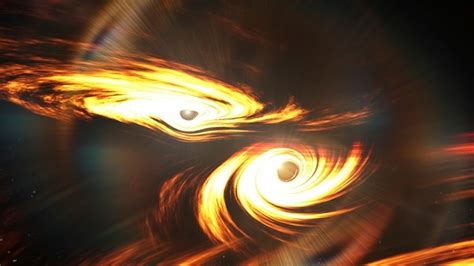The field of gravitational wave detection has catapulted from the realms of theoretical physics into real-world observation, forever altering our understanding of the universe. Gravitational waves, ripples in spacetime caused by violent astrophysical events, were once a mere intellectual curiosity. Today, they present astronomers and physicists with an extraordinary tool for examining cosmic events that were previously obscured. The recent advancements in detector technology, particularly with projects like LIGO, Virgo, KAGRA, and GEO600, have opened new vistas in our ability to observe these elusive waves.
Understanding how gravitational wave detectors work can be as mystifying as comprehending the waves themselves. Unlike traditional telescopes, gravitational wave detectors cannot be ‘aimed’ in a straightforward sense. An interesting analogy is drawn with antennas which have an anisotropic sensitivity—similarly, detectors like LIGO and Virgo are sensitive to signals from specific directions. However, researchers have ingeniously tackled this challenge by deploying multiple detectors with different orientations. By comparing the signal arrival times across these detectors, scientists can triangulate the source’s location, much like how GPS satellites determine positions on Earth. It’s a fitting marriage of technology and theoretical physics.
LIGO, Virgo, and KAGRA form a triumvirate of detectors that work in harmony to locate the origin of gravitational waves. LIGO, with its iconic ‘L’-shaped design, consists of two 4 km-long arms housed in vacuum tubes, through which a laser beam travels. As gravitational waves pass through, they distort space subtly, altering the distance traveled by the laser beams and creating an interference pattern detected at the beam’s origin. It’s this sensitivity to minuscule distortions—akin to measuring a distance to the nearest star with a precision of a hair’s width—that makes these detectors marvels of modern engineering.
Additionally, the landscape of gravitational wave detection isn’t confined to ground-based observatories. The European Space Agency’s LISA (Laser Interferometer Space Antenna) is an ambitious space-based mission set to launch in 2035. Consisting of three satellites positioned millions of kilometers apart, LISA will detect waves with frequencies inaccessible to ground-based detectors, thus offering a more comprehensive view of gravitational phenomena. The synergy between terrestrial and space-based detectors promises a golden age in multimessenger astronomy, where observations of gravitational waves are complemented by electromagnetic signals, neutrinos, and cosmic rays.
The collaborative nature of these projects cannot be overstated. For instance, Germany’s GEO600, though smaller in scale, collaborates with LIGO, Virgo, and KAGRA, enhancing the global network’s ability to detect and analyze gravitational waves. This collaboration underscores a key aspect of modern science: large-scale, international cooperation is often necessary to unlock the universe’s deepest secrets. The sensitivity of these detectors improves as they work collectively, ensuring that waves originating from any direction are captured with increased accuracy.
Speculation surrounding the potential for extraterrestrial communications via gravitational waves adds a futuristic twist to this already groundbreaking field. Drawing from concepts in the sci-fi trilogy ‘The Three-Body Problem’ by Cixin Liu, discussions have surfaced regarding the feasibility of civilizations using gravitational wave modulation for interstellar messages. While technically conceivable, the energy requirements for generating detectable signals—potentially by manipulating massive objects like neutron stars or black holes—would be staggering and are well beyond our current technological capabilities. Nevertheless, this idea stimulates exciting discussions about the future of both space communication and detection technologies.
Another fascinating aspect of gravitational wave detection is its intersection with quantum mechanics. The hunt for a quantum theory of gravity that can integrate general relativity with quantum mechanics remains one of the holy grails of modern physics. Gravitational waves provide crucial experimental data that could one day help bridge this gap. The existence of gravitons—hypothetical quantum particles mediating gravitational forces—may be indirectly informed by these observations. This leads to profound implications not just for theoretical physics but for our understanding of the universe’s fundamental nature.
As we continue to enhance the sensitivity and scope of gravitational wave detectors, the discovery potential seems boundless. The capability to detect events like black hole mergers, neutron star collisions, and potential signals from cosmic inflation offers an unprecedented window into the cosmos. These endeavors not only validate the theoretical frameworks laid down by pioneers in physics but also pave the way for new theories that could explain the fabric of our universe. Indeed, gravitational wave astronomy is a burgeoning field that stands at the apex of experimental and theoretical frontiers, promising to illuminate the darkest corners of the cosmos.


Leave a Reply